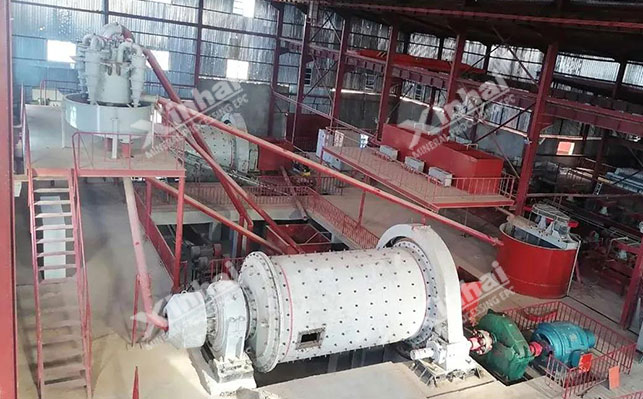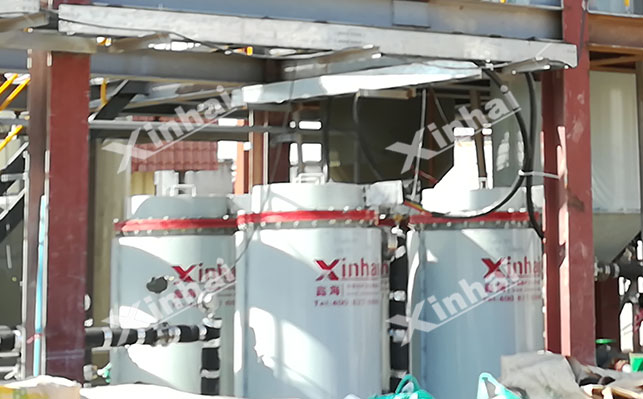
15311826613
Click to add WeChatIn modern industry, nickel and cobalt, as important metal elements, are an important part of the development of different fields. Nickel plays an important role in the steel field such as stainless steel, alloy structural steel, as well as in the battery, electroplating and other industries; cobalt plays a key role in high-end manufacturing industries such as lithium batteries, super alloys, and cemented carbide. With the rapid development of industries such as electric vehicles and electronic equipment, the demand for nickel and cobalt has increased dramatically.
However, most nickel-cobalt ores in nature exist in a symbiotic form, especially sulfide nickel-cobalt ores. The ore properties are complex, and nickel and cobalt are closely symbiotic with other impurity minerals, which makes the separation and extraction of nickel and cobalt face many challenges. Therefore, how to effectively separate nickel and cobalt is of great significance to improve the utilization rate of nickel-cobalt resources and ensure the sustainable development of related industries. The following article will focus on the nickel-cobalt separation process!
Crushing and grinding: First, crush the sulfide nickel-cobalt ore to gradually reduce its particle size for subsequent grinding operations. The purpose of grinding is to dissociate nickel-cobalt minerals from other impurity minerals as fully as possible, creating conditions for subsequent separation. For some nickel-cobalt sulfide ores with coarse embedded particle sizes, a one-stage grinding process can be used; for ores with fine and complex embedded particle sizes, a two-stage or multi-stage grinding process can be used.

Flotation enrichment: According to the differences in the surface properties of minerals in nickel-cobalt sulfide ores, flotation is used for enrichment. By adding appropriate flotation agents (such as collectors, frothers, and regulators), the surface of nickel-cobalt sulfide minerals is made hydrophobic, able to attach to bubbles, and float to the surface of the pulp with foam to form a nickel-cobalt concentrate foam layer, while gangue minerals remain in the pulp, thereby achieving the initial separation of nickel-cobalt minerals and some impurities.
The nickel-cobalt sulfide ore leaching process mainly further removes impurities from the products after flotation enrichment. Acid leaching or oxygen pressure leaching is often used.
Acid leaching: Acid solutions such as sulfuric acid and hydrochloric acid are often used to leach pretreated nickel-cobalt concentrates. Under certain conditions such as temperature, acidity and leaching time, nickel and cobalt minerals are dissolved into the solution, while most of the gangue minerals are insoluble and remain in the leaching residue.
Oxygen pressure leaching: Leaching under certain oxygen pressure and temperature conditions can increase the leaching rate of nickel and cobalt, and at the same time inhibit the leaching of some impurities such as iron.

In addition to nickel and cobalt ions, the leachate may also contain impurity ions such as iron, copper, and zinc. The pH value can be adjusted to make some impurity ions such as iron ions form hydroxide precipitation and be removed; the sulfide precipitation method can also be used to add a sulfiding agent to make impurity ions such as copper and zinc form sulfide precipitation and separation. For example, an appropriate amount of sodium hydroxide or sodium carbonate is added to the leachate to adjust the pH value so that iron ions are precipitated within a certain pH range.
Solvent extraction method: Cobalt and nickel are separated by adding a specific extractant using the different solubility of cobalt and nickel in organic solvents. The initial process is to mix the raw materials containing cobalt and nickel with organic solvents, and under acidic conditions, make cobalt and nickel enter the organic phase and the aqueous phase respectively, so as to achieve preliminary separation. After that, further purification is carried out through steps such as back extraction, washing, and drying to obtain pure cobalt and nickel. It is mostly suitable for ores with relatively high nickel and cobalt content and relatively stable impurity types and contents, and can achieve better separation effects.
Ionic liquid extraction method: separation is achieved by using ionic liquids to form stable complexes with cobalt and nickel. The raw materials containing cobalt and nickel are mixed with ionic liquids, and by adjusting the pH value, temperature and other conditions, cobalt and nickel are respectively entered into the ionic liquid phase and the aqueous phase to achieve preliminary separation. Subsequently, pure cobalt and nickel are obtained through steps such as back extraction, washing, and drying. It is suitable for projects with high environmental protection requirements, as well as some complex and difficult-to-select nickel-cobalt ores.
Adsorption method: separation is achieved by selective adsorption of cobalt and nickel using adsorbents. The raw materials containing cobalt and nickel are mixed with adsorbents, and the adsorbents selectively adsorb cobalt or nickel, thereby achieving separation of the two. Then, through the steps of elution and regeneration, the adsorbed metals are eluted from the adsorbent to obtain pure cobalt and nickel, and the adsorbent can be reused. It is suitable for treating some ores with low nickel and cobalt grades and relatively simple impurities, or as an auxiliary means of other separation methods to further purify nickel and cobalt products.

Electrochemical method: Through the oxidation-reduction reaction on the electrode, cobalt and nickel are converted into soluble ions or precipitates respectively, thereby achieving separation. The raw material solution containing cobalt and nickel is energized, and the voltage, current and other conditions are controlled to make cobalt and nickel react differently on the electrode, and convert them into soluble ions or precipitates respectively, and then pure cobalt and nickel are obtained through the steps of filtration, washing, drying and other steps. It is suitable for treating some ores with relatively simple components and high nickel and cobalt content, or for occasions where the purity of nickel and cobalt products is extremely high.
The effective separation of sulfide nickel and cobalt ore is a complex and critical technology, which is crucial for the efficient utilization of nickel and cobalt resources. Commonly used nickel and cobalt separation methods such as solvent extraction, ionic liquid extraction, adsorption and electrochemical methods have their own characteristics and scope of application. In practical applications, it is necessary to comprehensively consider and select appropriate separation methods and process flows based on the specific characteristics of nickel-cobalt sulfide ore, including mineral composition, embedded particle size, grade, etc.
recommend: